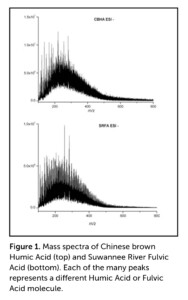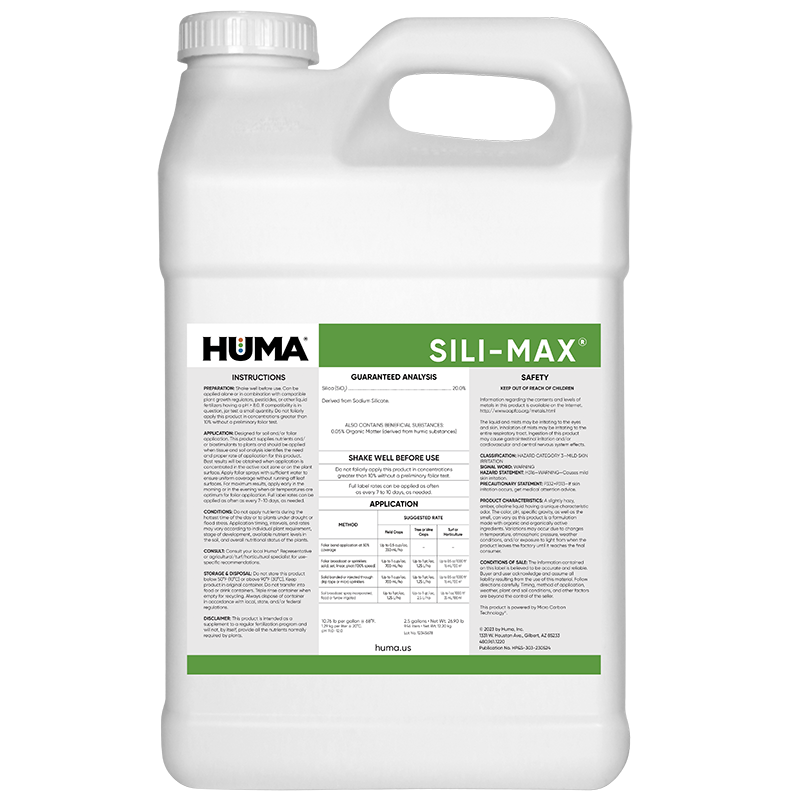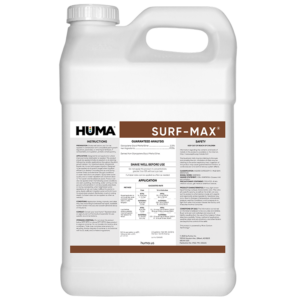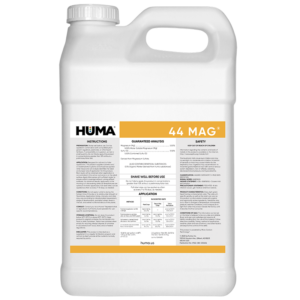SILI-MAX
Benefits of Use:
- Essential in grains, grasses, and turf for stronger heads, shoots, and blades
- Increases the strength and rigidity of the plant cells
- Strengthens cell walls to prevent flopping or lodging
- Reduces the tendency of crops and turf to wilt during the initial stages of drought
- Increases resistance to environmental stresses
Deficiency Symptoms—When to Apply:
- Weak plant cell structure
- Inadequate silica levels in tissue or soil analysis
FAQs
Related Products
Related Case Studies

Huma® Liquid Sili-Max® Improves Wheat Yield at Much Higher Efficiency Than Conventional Dry Silicon Fertilizers
Objective The objective of this study was to compare, for use in Louisiana wheat production, the efficacy of a liquid silicon (Si) fertilizer (Huma® Sili-Max®) with a commonly used dry Si source (steel slag) and another Si source (wollastonite) often used in research as a suspension. Silica deposition is an important barrier for foliar fungal
Related Blog Posts

What Differentiates Humic and Fulvic Acids?
By Richard Lamar, PhDDirector of Humic ResearchBio Huma Netics, Inc. For centuries, humic acids (HA) were thought to be composed of much larger molecules than those found in fulvic acids (FA). However, the application of Fourier-transform ion cyclotron resonance mass spectrometry (FT-ICR MS), which separates molecules on the basis of molecular weight, demonstrates that the

How Advances in Crop Genetics Influence Nutrient Management
Advances in crop genetics are transforming how farmers approach nutrient management. Improved seed resilience, higher yield potential, and changing plant behaviors mean that fertility programs must evolve too. As genetics drive progress across the farm, understanding how nutrition supports those genetics is key to maximizing productivity and sustainability

10 Fertilizer Facts for Global Fertilizer Day 2022
Every year, October 13 is marked as Global Fertilizer Day to highlight the significance and acknowledge the contribution of the fertilizer industry in feeding the world’s growing populations. This annual international awareness campaign is supported by fertilizer associations and companies across the world with the shared purpose of highlighting the social, economic, and environmental impact






